The Temple of Hephaestus in Athens

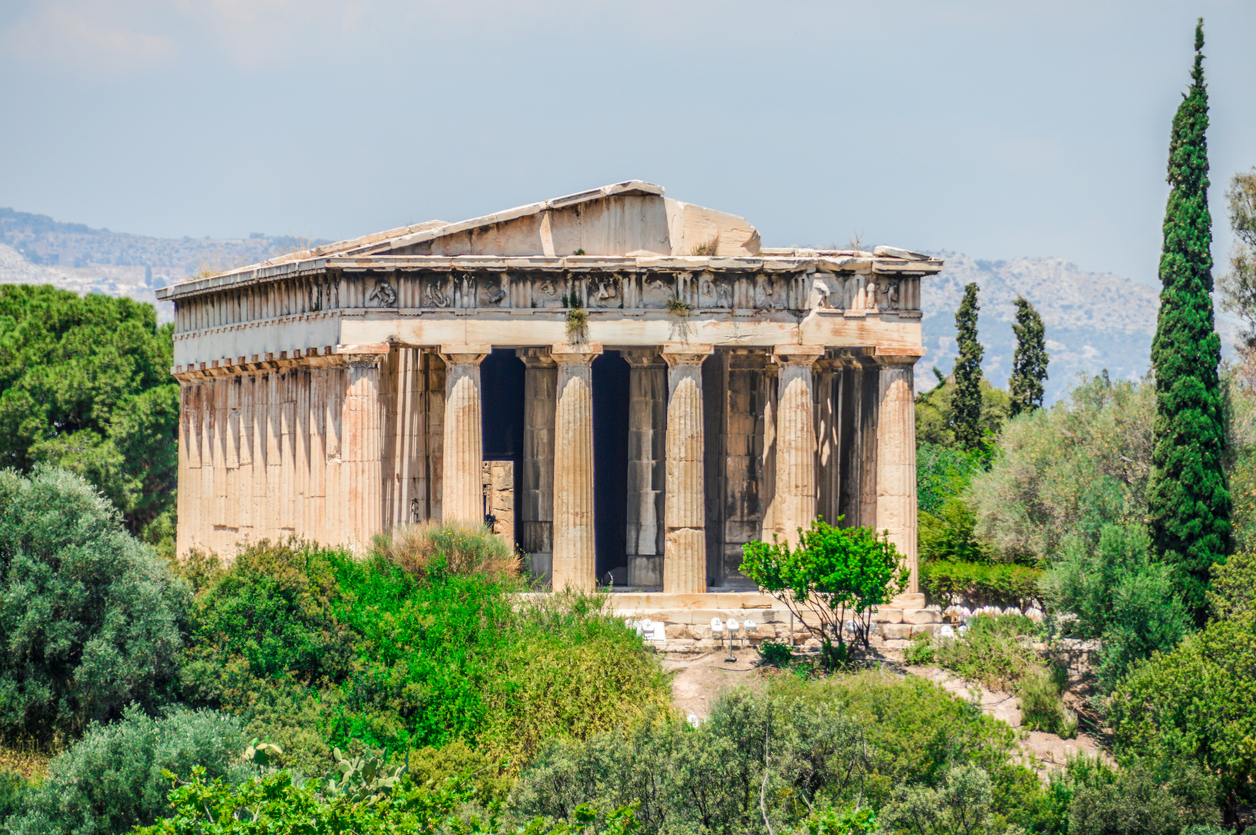
The Temple of Hephaestus is the best-preserved temples from antiquity, it stands proudly on Agoraios Kolonos hill, overlooking the Ancient Agora of Athens.
Nestled on the western edge of the Ancient Agora, the Temple of Hephaestus offers a unique vantage point for those who seek to immerse themselves in the rich tapestry of Athens’ past. Built between 460 and 420 BC, during the height of Pericles’ ambitious building program, the temple was dedicated to Hephaestus, the god of metalworking and fire, and Athena Ergani, the goddess of craftsmanship.
Architecture and Design
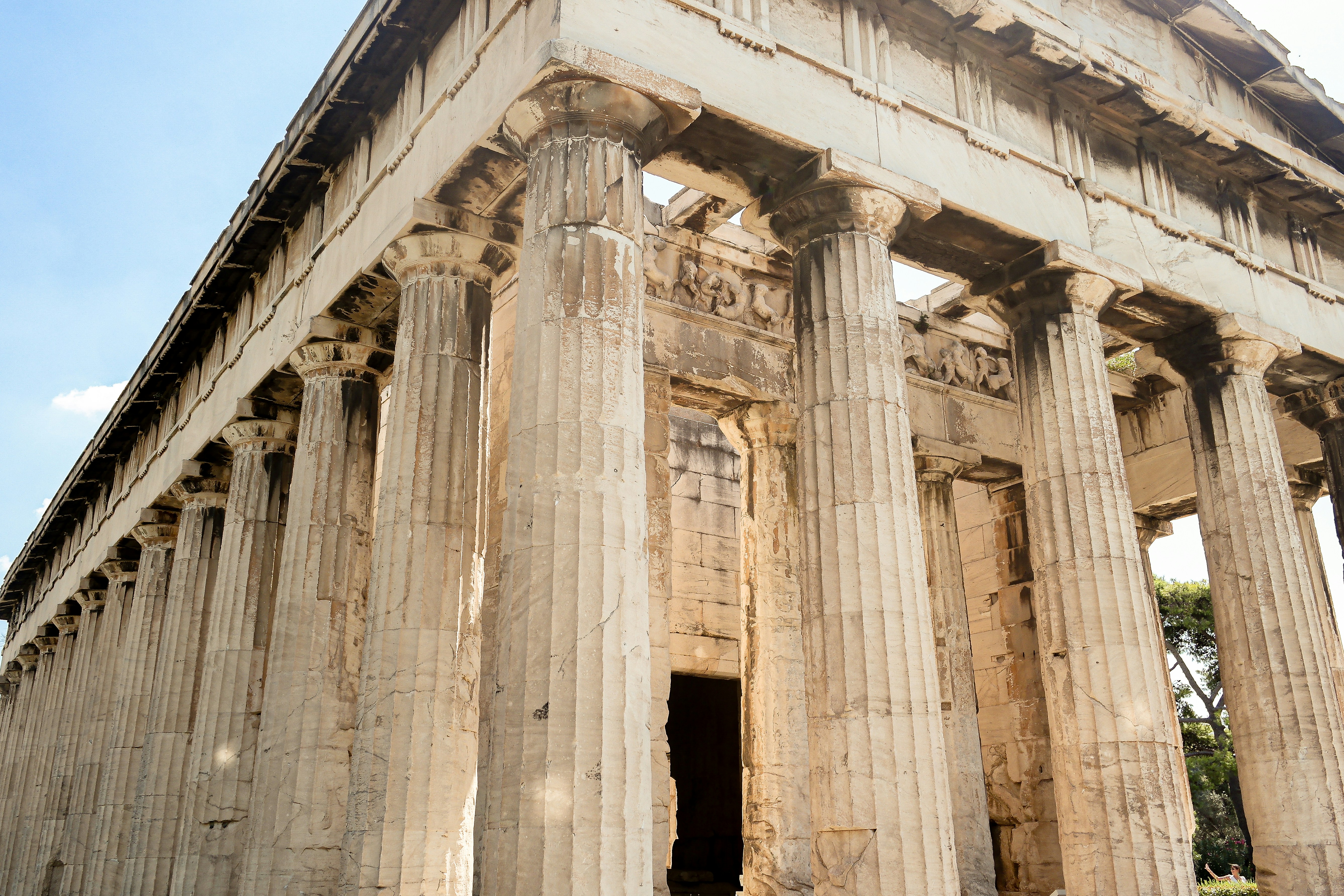
The Temple of Hephaestus is a great example of Doric architecture, a style characterized by its simplicity and strength. Crafted from the famous Pentelic marble, the temple’s sculptures were carved from the equally renowned Parian marble, known for its fine grain and pure white appearance.
With 6 columns gracing its east and west sides, and 13 columns lining its north and south sides, the temple exudes a sense of balanced symmetry. This peripteral structure, surrounded by a single row of columns, invites you to walk around and appreciate its grandeur from every angle. The pronaos, or front porch, leads into the cella, where the statues of Hephaestus and Athena once stood, and the opisthodomos, or back porch, adds to the architectural harmony of this sacred space.
But the temple’s beauty is more into the stories it tells through its sculptural decorations.
Sculptural Decorations
As you stand before the eastern front of the temple, you’ll be greeted by scenes of Hercules’ labors and Theseus’ battle with the Pallantides. Tales of these heroes are actually deeply woven into the fabric of Athenian identity. The western side of the temple offers a dramatic depiction of the fall of Troy, a story of war, cunning, and the consequences of divine wrath.
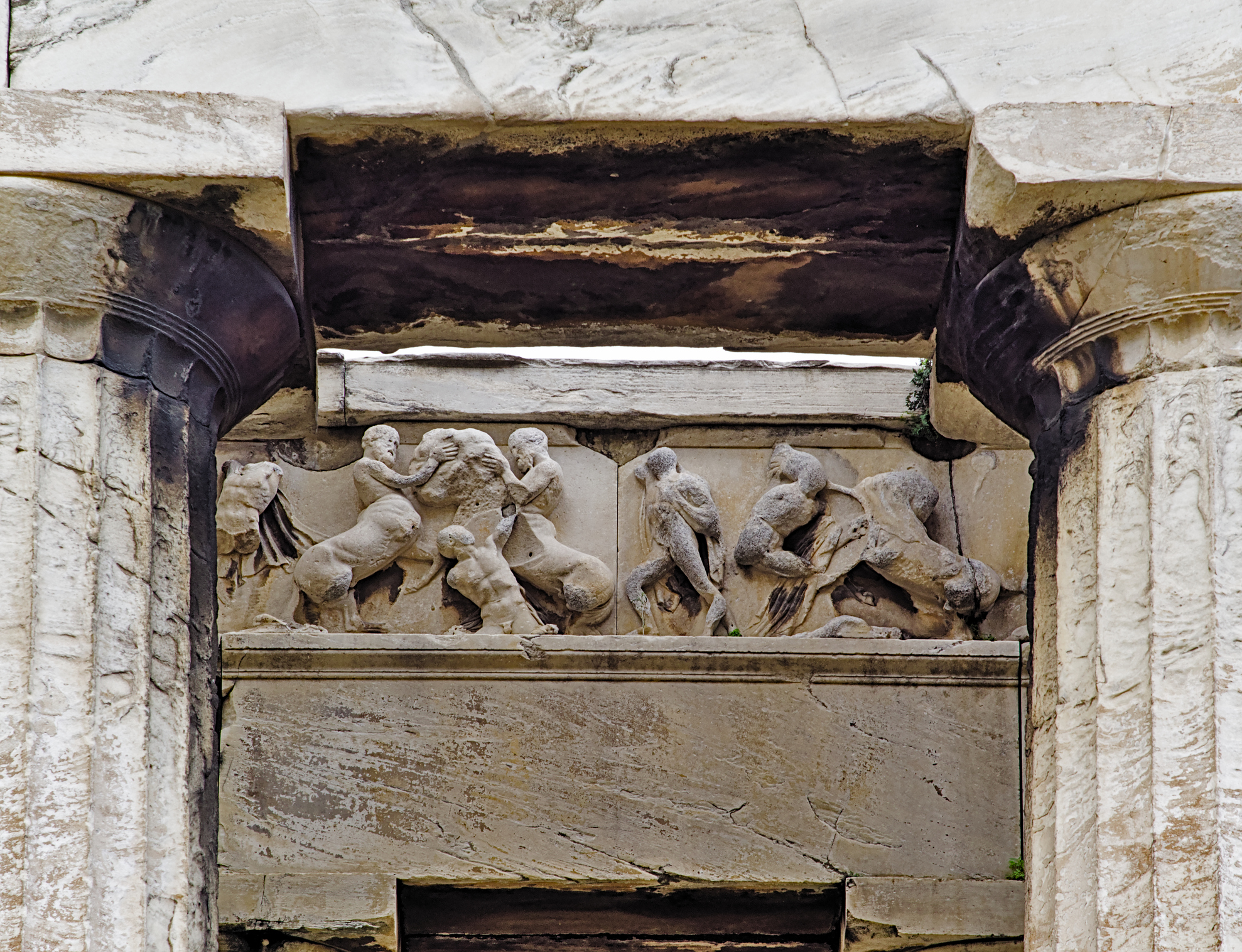
The frieze on the pronaos is particularly intriguing:
- West Frieze - Battle of the Centaurs and Lapiths: This frieze depicts the famous battle between the Centaurs and Lapiths, which occurred during the wedding feast of Pirithous, king of the Lapiths. The Centaurs, who were guests at the wedding, got drunk and attempted to abduct the bride and other women, leading to a fierce battle. Theseus, the hero of Athens, played a crucial role in defeating the Centaurs, and his presence in this frieze emphasizes his importance in Greek mythology.
- East Frieze - Possibly Theseus and the Pallantides: The east frieze is believed to depict a scene related to Theseus and the Pallantides. The Pallantides were the sons of Pallas, who challenged Theseus for the throne of Athens. The frieze likely shows Theseus triumphing over them, further highlighting his role as a protector of Athens and a key figure in its mythology.
What is the Influence of Mythology on Artistic Representation?
These mythological scenes were carefully chosen to reflect the values and ideals of Athenian society. The depiction of the Centaur-Lapith battle is a classic example of the struggle between order and chaos. This mythological event represents the triumph of civilized society (Lapiths) over barbarism (Centaurs). Such imagery was particularly meaningful to the Athenians, who saw themselves as champions of civilization and order.
The potential portrayal of Theseus on the friezes further reinforces the connection between the temple and Athenian civic ideals. Theseus was a symbol of Athenian democracy, justice, and leadership. By depicting Theseus in victorious scenes, the temple’s art underlines the importance of these values to the city’s identity.
The Theseus scenes led to the temple being popularly known as the “Theseion,” a name that was also given to the sourounding modern city’s district and the nearby Metro station.
What is so Special about the Friezes of the Temple?
What’s special about these friezes is how the artist managed to show movement and action in the carved stone. The figures seem to be alive, with carefully chosen poses that add to the drama of the scenes.
These friezes are connected to the style of other famous Athenian sculptures from the same time, like those on the Parthenon. However, they also have some unique features, such as the way the figures are positioned and how they interact with the space around them, hinting at the artistic trends that would come later in Greek history.
Why was the Temple Preserved so Well?
The Temple of Hephaestus has weathered the centuries remarkably well, largely thanks to its adaptive reuse over time. In the 7th century AD, it was converted into a Christian church dedicated to Saint George Akamas. This transformation not only preserved the structure but also added a new layer of history to its already rich narrative.
Serving as an Orthodox church until 1834, the temple witnessed the rise and fall of empires, the shift from paganism to Christianity, and the eventual rebirth of Greece as an independent nation. After Greece’s independence, it briefly functioned as a museum, housing treasures from the city’s ancient past.
In 1934, the temple was restored to its original form as an ancient monument, a decision that allowed it to reclaim its place as one of the most significant remnants of classical Athens. Today, as you walk among its columns and gaze upon its carvings, you are connecting with a living piece of history, preserved and cherished through the ages.
Connecting the Dots: The Temple of Hephaestus in the Broader Tapestry of Ancient Athens
The dedication of the temple to Hephaestus and Athena Ergani is no coincidence. These deities represented the core values of the city: craftsmanship, innovation, and the protection of the polis. Hephaestus, the master blacksmith of the gods, symbolizes the technical skill and industrious nature that fueled Athens’ rise to power. Athena Ergani, as the patroness of artisans, embodies wisdom and the careful planning that characterized Athenian democracy and its architectural feats.
The placement of the temple in the Agora—Athens’ bustling center of public life speaks volumes about its importance. Here, surrounded by stoas, law courts, and marketplaces, the temple served as a place of worship, but also as a constant reminder of the city’s divine favor and cultural superiority. The Agora was the beating heart of Athens, where citizens gathered to discuss politics, philosophy, and commerce. In this context, the Temple of Hephaestus was both a spiritual and a civic symbol, a place where the divine and the mortal worlds intersected.
When the temple was restored to its ancient form in the 20th century, it became an act of reclamation of the city’s classical heritage, a way of reasserting Athens’ identity as the cradle of Western civilization. Today, the Temple of Hephaestus stands as a bridge between the ancient and modern worlds, a place where visitors can connect with the past in a direct and meaningful way.
Advice for the Modern Traveler
To fully appreciate the temple’s significance, I recommend visiting it in conjunction with a tour of the Ancient Agora. This will allow you to see how the temple fits into the wider layout of the city and how it interacted with other important structures. For those interested in architecture, a close examination of the temple’s Doric elements compared to the more ornate Ionic and Corinthian styles found elsewhere in Athens can be particularly rewarding.
In many ways, visiting the Temple of Hephaestus is like stepping back in time. But more than that, it’s an opportunity to connect with the ideas and values that shaped one of the greatest civilizations in human history. Whether you’re an architecture enthusiast, a history buff, or simply a traveler looking to experience the depth of Athens’ cultural heritage, this site offers something profound and lasting.
Explore Ancient Athens with Expert Guides
For history enthusiasts, guided tours of the Ancient Agora and surrounding sites are the perfect way to delve deep into the stories that shaped Athens. Here are three top recommendations:
1. Acropolis, Plaka & Ancient Agora Guided Tour
This tour offers a comprehensive journey through the Acropolis, the vibrant neighborhood of Plaka, and the historically rich Ancient Agora. Led by knowledgeable guides, this tour provides an immersive experience into the daily life and architecture of ancient Athens. It’s a perfect blend of walking through history while enjoying the present-day ambiance of these iconic locations.
2. Path to Democracy: Acropolis & Agora Tour
This tour focuses on the birth of democracy in Athens, exploring how the principles of governance were debated and implemented in the very places you’ll visit. It provides deep insights into the political and philosophical underpinnings of Athenian society, making it a must for anyone interested in the roots of democratic governance.
3. Ancient Agora E-Ticket & Optional Audio Tour
For those who prefer to explore at their own pace, the Ancient Agora E-Ticket with an optional audio tour is an excellent choice. This self-guided option allows you to wander through the Agora with the flexibility to spend as much time as you like at each site, while still gaining valuable historical context through the audio guide. It’s perfect for independent travelers who want to soak in the atmosphere and history of the Agora at their own leisure.
The Ultimate Tour: Acropolis and Six Archaeological Sites
For those looking to explore beyond a single site, the Acropolis and 6 Archaeological Sites Combo Ticket offers a comprehensive package. This ultimate tour option grants access to several key historical sites across Athens, including the Acropolis, the Ancient Agora, and four other significant locations. With this ticket, you can explore at your own pace, enjoying a self-guided journey through Athens’ storied past. It’s an excellent choice for those who want a deep dive into the city’s ancient history, with the flexibility to explore multiple locations at their leisure.
Frequently Asked Questions about the Temple of Hephaestus
What is special about the Temple of Hephaestus?
The Temple of Hephaestus is one of the best-preserved ancient Greek temples. It is a remarkable example of Doric architecture and has remained largely intact since it was built between 460 and 420 BC. The temple’s well-preserved sculptures and friezes, which depict various mythological scenes, add to its significance.
Can you visit the Temple of Hephaestus?
Yes, you can visit the Temple of Hephaestus. It is located within the Ancient Agora of Athens, and it is accessible with a ticket to the Agora. The temple stands on top of Agoraios Kolonos hill, providing visitors with a scenic view of the surrounding area.
How long does it take to see the Temple of Hephaestus?
Visiting the Temple of Hephaestus can take anywhere from 30 minutes to an hour, depending on your interest in the details of the architecture and the surrounding area. The temple is part of the larger Ancient Agora site, so you may want to allocate additional time to explore the other historical landmarks nearby.
What happened at the Temple of Hephaestus?
The Temple of Hephaestus was originally dedicated to Hephaestus, the god of metalworking and fire, and Athena Ergani, the goddess protecting craftsmen. Over time, the temple was converted into a Christian church dedicated to Saint George Akamas in the 7th century AD. It served as a church until 1834, after which it briefly functioned as a museum before being restored to its original form as an ancient monument.
Do you have to pay to see the Temple of Hephaestus?
Yes, there is an entrance fee to visit the Temple of Hephaestus as it is part of the Ancient Agora of Athens. The ticket also grants you access to other important sites within the Agora, making it a worthwhile investment for history enthusiasts.

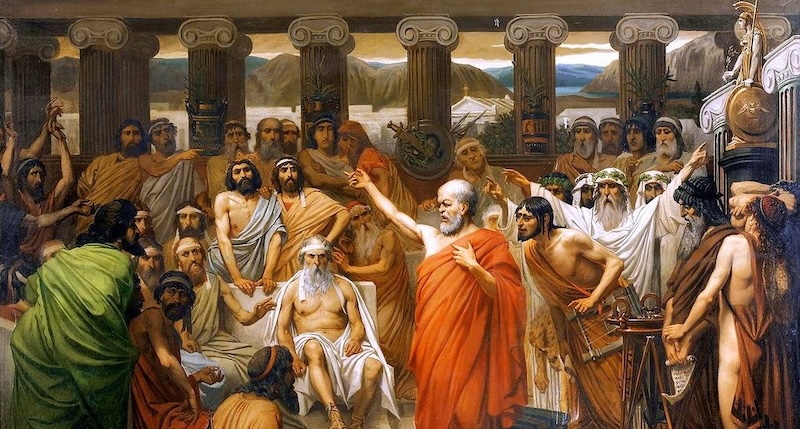
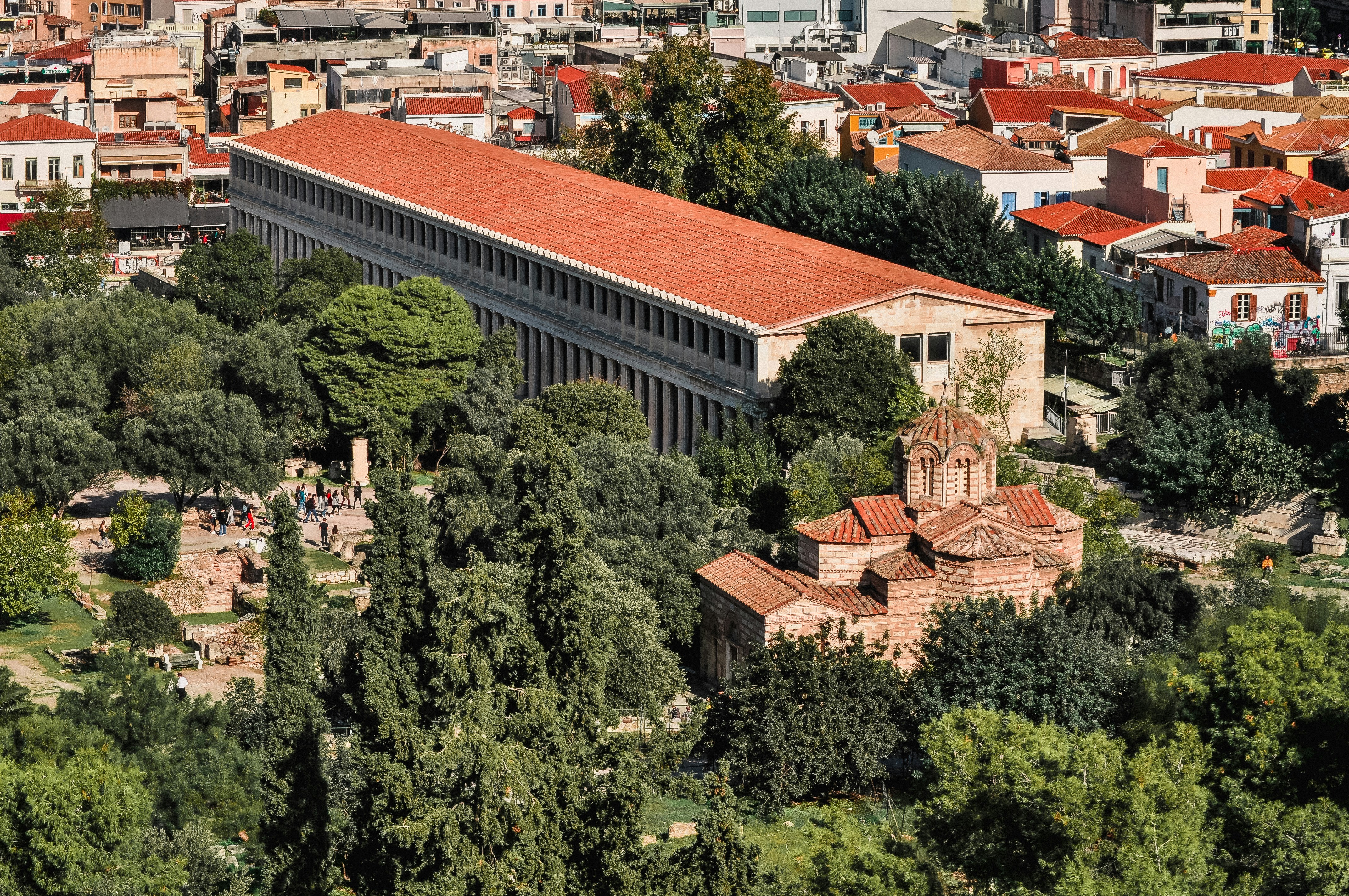
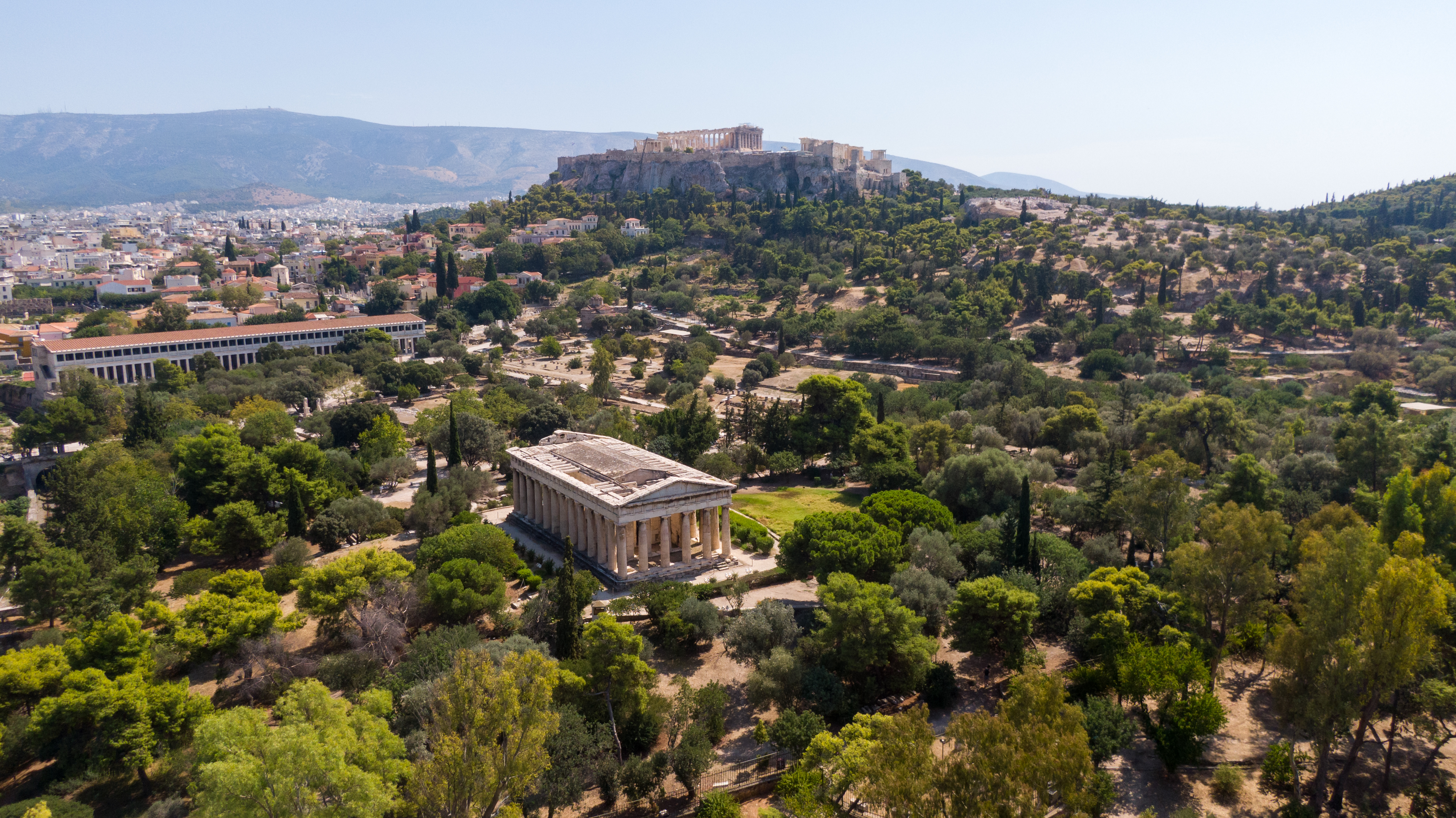
Comments